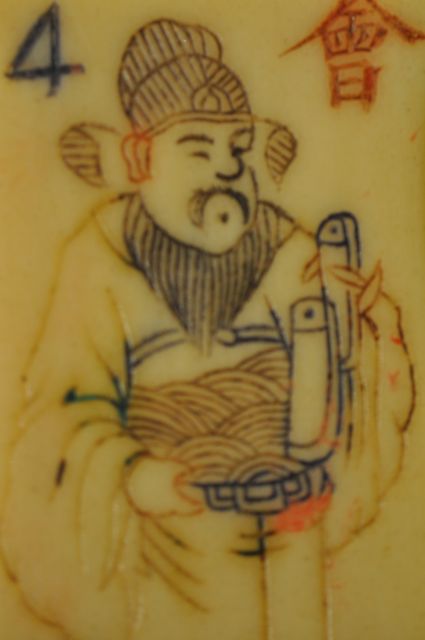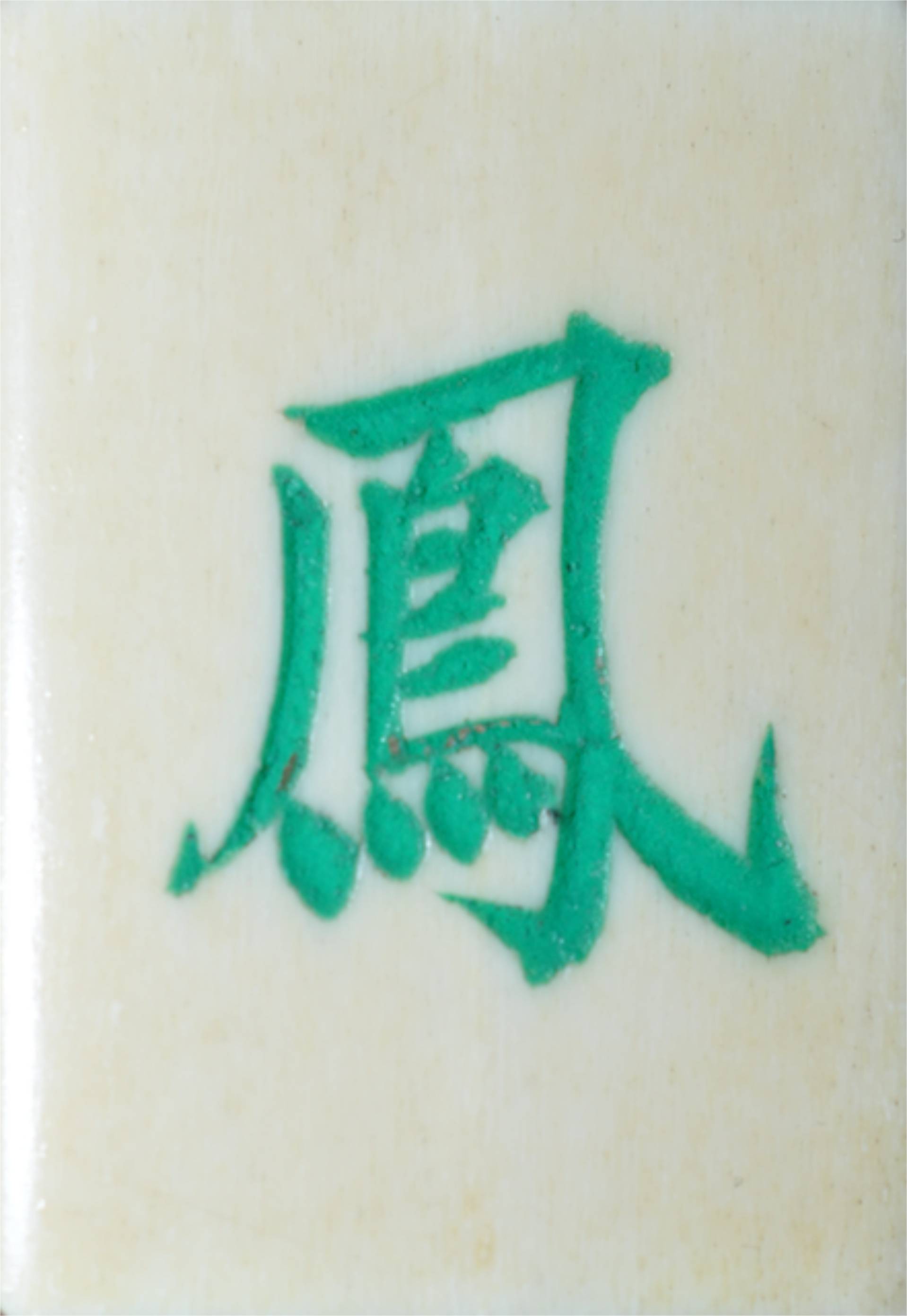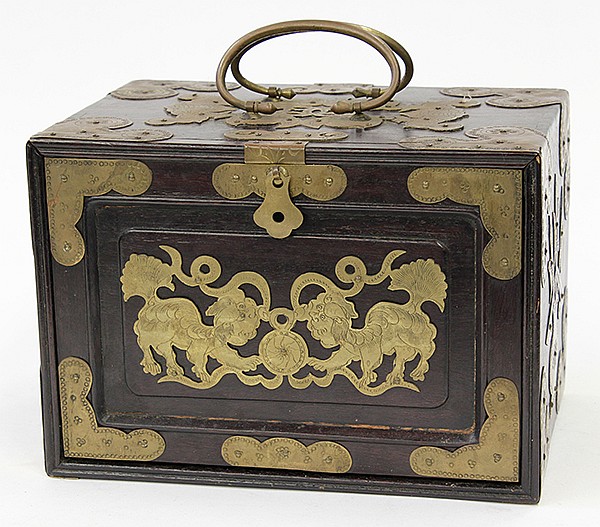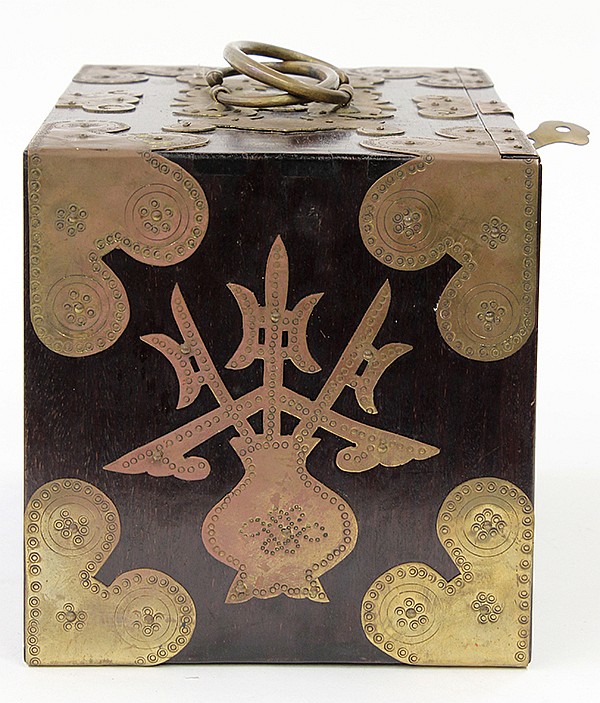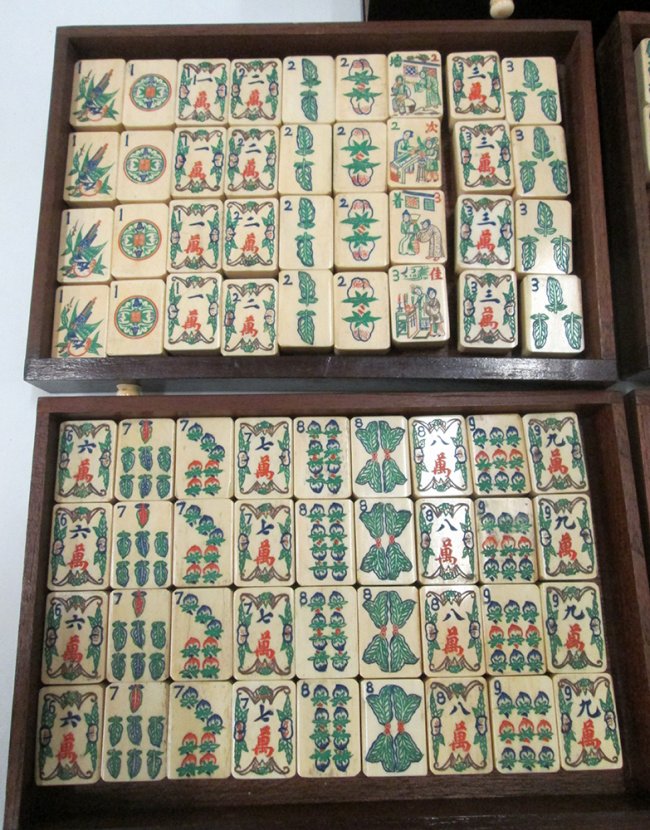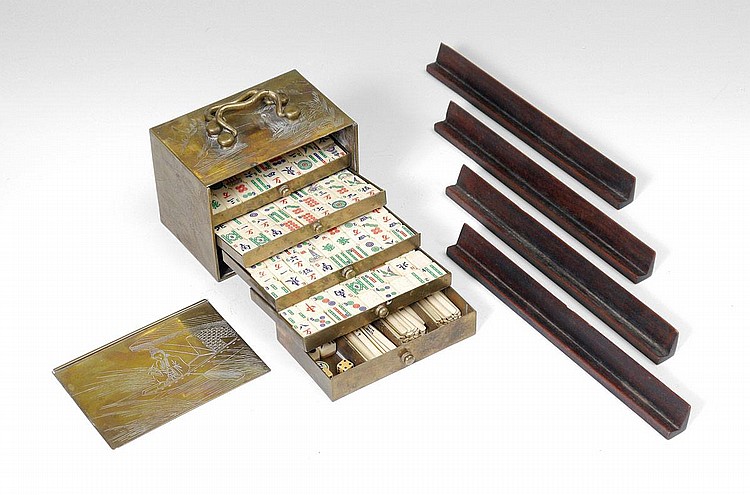
This delightful brass box holds an equally lovely set of Mahjong tiles. The panel which forms the front of the box has a man in a boat, similar to those often seen on some Chinese Bakelite Flower tiles. The wood racks were early versions and were only used to keep a player's Mahjong tiles secret; when a tile was called, that grouping would be placed on the tabletop.
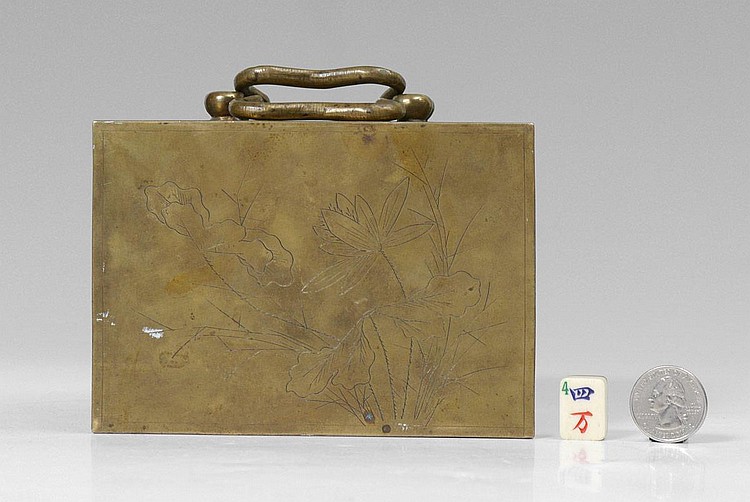
Note the lovely flowers seen on the back of this box. As in many very expensive sets, this box was designed to have all its sides seen. The box handles are very heavy, giving an important look to the box.
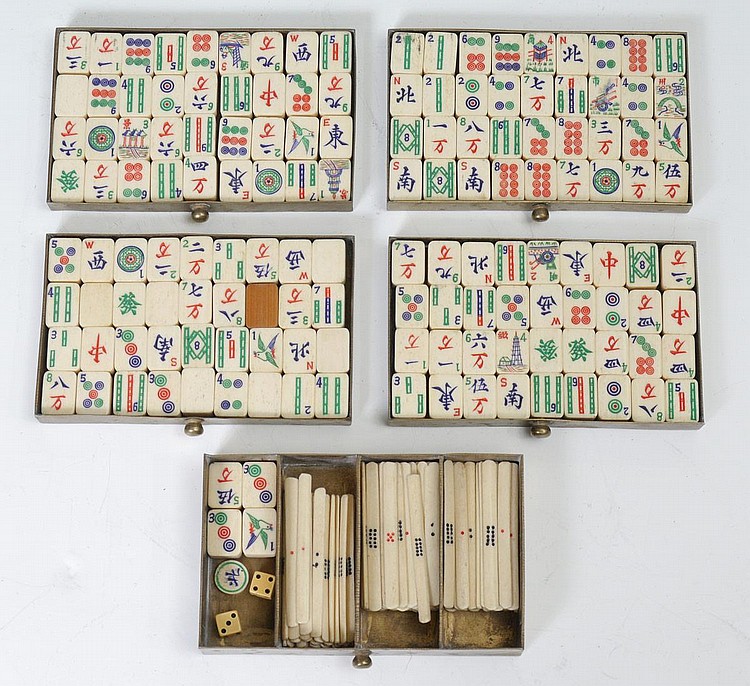
The Flower tiles on this set feature modes of transportation and types of buildings. The unusual One Dots have linear interiors, and the others are circles within circles. The Bams are of the simple rod type. One of the Flowers features a man in a boat, similar to the one seen on the front panel of the box. The tiles are in exceptional condition, with few of the streaks often seen in the bone and bamboo sets. The counting sticks are smooth, unlike the more ragged appearance of those in less expensive sets.
http://www.invaluable.com/catalog/viewLot.cfm?afRedir=true&lotRef=4f482f267b&scp=c&ri=1350

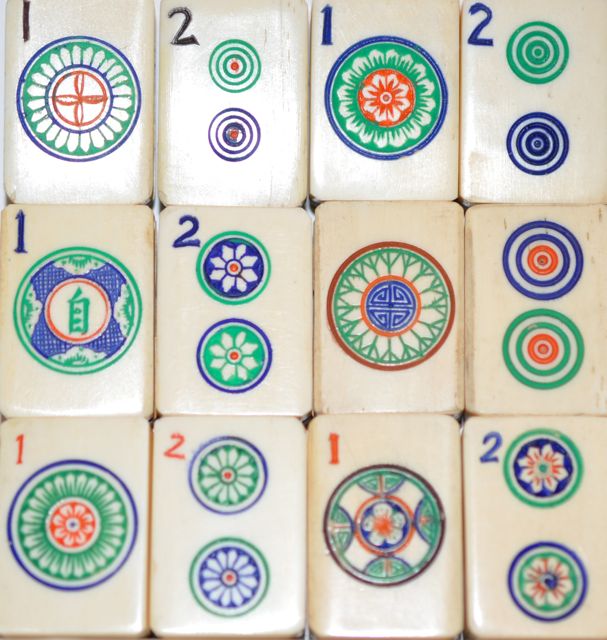
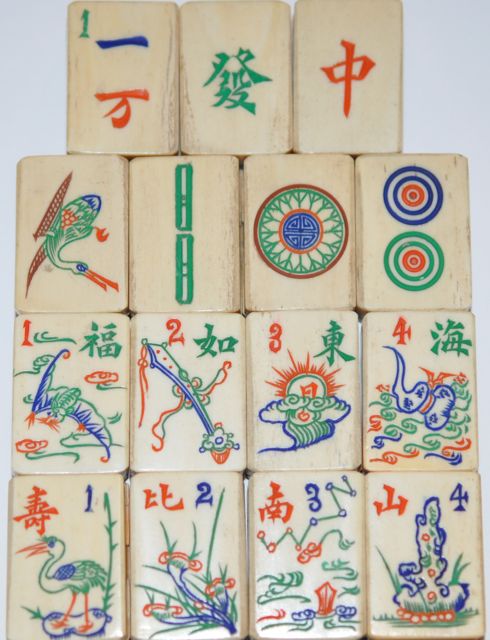
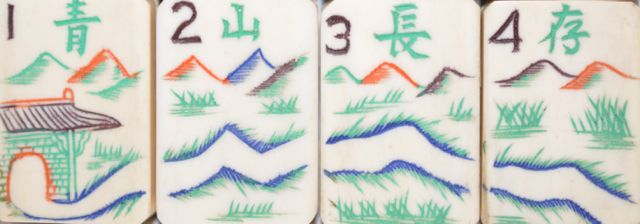

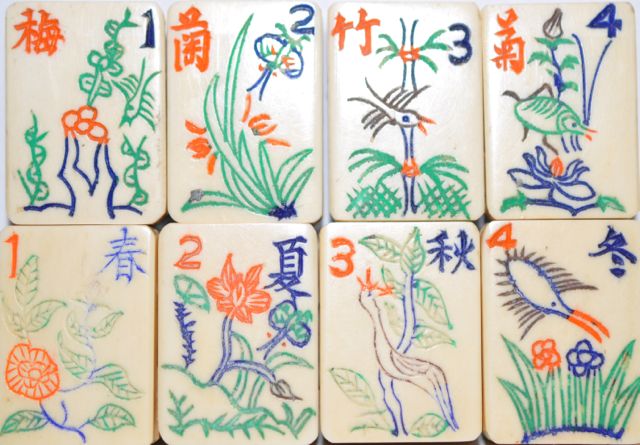
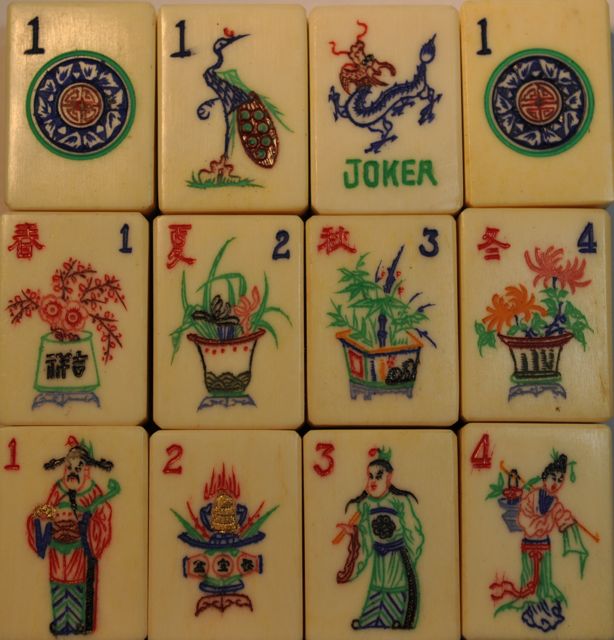 This delightful hand carved Mahjong set comes in a wood box with a sliding top panel. I love the Dragon Joker tile (I was lucky, there are 8 carved ones) and the One Dot with the symbol for longevity, Shou, in the center. The top row of Flowers are flowers: plum blossom, orchid, bamboo, and chrysanthemum, flowers usually seen when flowers are shown. The bottom row is a bit different: the rich man and the pot of gold, and two gods: according to Wikipedia probably Lü Dongbin, who dresses as a scholar and carries a sword, and Guanyin, the Goddess of Mercy. I love the gold paint used for the rich man, the pot of gold, and the spots on the peacock's tail.
This delightful hand carved Mahjong set comes in a wood box with a sliding top panel. I love the Dragon Joker tile (I was lucky, there are 8 carved ones) and the One Dot with the symbol for longevity, Shou, in the center. The top row of Flowers are flowers: plum blossom, orchid, bamboo, and chrysanthemum, flowers usually seen when flowers are shown. The bottom row is a bit different: the rich man and the pot of gold, and two gods: according to Wikipedia probably Lü Dongbin, who dresses as a scholar and carries a sword, and Guanyin, the Goddess of Mercy. I love the gold paint used for the rich man, the pot of gold, and the spots on the peacock's tail.
